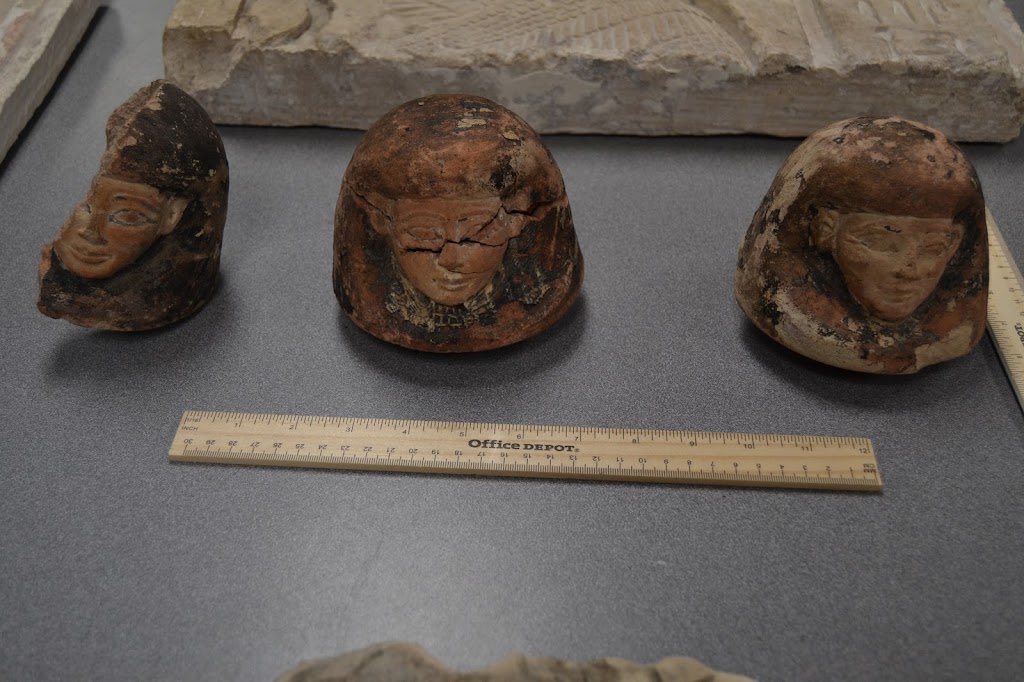The Museum Raids Cases Revisited: Recalling the Southeast Asian Artifacts Seized and the Dealers Indicted
The museum raids occurred on a morning in January 2008 when a troop of officers outfitted with agency alphabet jackets entered the Los Angeles County Museum of Art, the Bowers Museum, the Pacific Asia Museum, and the Mingei Museum. The goal of the raids was to “seize in place” cultural objects identified in court authorized search warrants. The media covered the event and were permitted access to the contents of the warrant affidavits.
A five-year undercover investigation prompted the law enforcement sweep, but seemingly little happened afterwards, prompting the Los Angeles Times last year to write, “No museum officials or collectors involved in the Southern California probe have been indicted, and no seized objects have been returned to their countries.”
The unsealed indictment reveals that antiquities dealers Markell and Olson were charged with one count of conspiracy to “knowingly enter and introduce into the commerce of the United States imported merchandise, namely, Burmese and Khmer antiquities, by means of materiallyfalse declarations and statements” and three counts of false statements concerning the entry of goods into the U.S.
Because the 2008 Markell/Olson indictment has now been unsealed, we know its claims. The charging document reads that Markell and Olson allegedly would:
… travel to Thailand to purchase Burmese and Khmer antiquities, including marble, wooden, bronze, and lacquer Buddhas and Khmer bronze bells, that were over 100 years old (“the antiquities”).
… cause the purchased Buddhas to be described on purchase invoices and packing lists as “sitting man” or “reclining man” to conceal their true nature and character.
… cause the purchased Khmer bronze bells to be described on purchase invoices and packing lists as “bell,” “bell 12th,” “bronze bell,” and “stand (bell)” to conceal their true nature and character.
… cause the antiquities to be listed on purchase invoices at 25% of their true purchase price.
… provide to a customs broker the purchase invoices and packing lists containing false statements describing the antiquities.
… cause a customs broker, relying upon the purchase invoices and packing lists containing false statements, to prepare an Entry Summary and associated import documents that also contained similar false statements regarding the antiquities.
… cause a customs broker to file the Entry Summary and associated invoices, packing lists, and other shipping documents, that falsely described the antiquities, to be filed with the Department of Homeland Security, Customs and Border Protection, at the time of importation.
Beginning on a date unknown and continuing to at least in or about January 2008 … [the] defendants and other unindicted co-conspirators, conspired and agreed with each other to knowingly and intentionally defraudthe United States, for the purpose of impeding, impairing, obstructing, and defeating the lawful Government functions of the Internal Revenue Service … by promoting and participating in a false charitable deduction scheme for the purpose of improperly claimingcharitable deductions on Federal incometax returns ….
The charging document points to alleged violations of the federal National Stolen Property Act–predicated upon ownership interests maintained by Thai and Cambodian title vesting laws–and to a claimed smuggling conspiracy that allegedly skirted the Cultural Property Implementation Act’s import restrictions meant to outlaw endangered Cambodian archaeological material from entering the U.S. marketplace.
One fact sequence contained in the Olson/Pettibone indictment recites allegations focused on artifacts from Cambodia. These assertions, naturally, must be proved beyond a reasonable doubt by the prosecution:
On or about November 6, 2005, defendant OLSON sent money to defendant PETTIBONE for the purchase of swords and daggers looted from Cambodia.
On or about November 10, 2005, defendant OLSON received a shipment from defendant PETTIBONE in Thailand containing six metal swords and two metal daggers.
On or about November 10, 2005, defendant OLSON told the UCA [an undercover federal agent] that he had just received six swords and two daggers from a site in Cambodia. Defendant OLSON described the swords and daggers as being “pre-Khmer” and dating from 1,000 A.D. Defendant OLSON further told the UCA that he had the swords and daggers classified on United States Customs documents as “metal sticks,” and defendant OLSON offered to sell the swords and daggers to the UCA.
On or about November 16, 2005, defendant OLSON offered to sell the UCA the Cambodian swords and daggers received from defendant PETTIBONE on or about November 10, 2005. Defendant OLSON also told the UCA that an additional shipment of swords had been delayed because the shipper needed to avoid a new team of Thai Customs officials.
On or about November 17, 2005, defendant OLSON met the UCA at defendant OLSON’S storage lockers in Cerritos, California. During their meeting, defendant OLSON showed the UCA the six swords and two daggers shipped from Thailand by defendant PETTIBONE, and defendant OLSON told the UCA he had purchased the antiques from defendant PETTIBONE.
The U.S. Attorney’s environmental crimes unit is spearheading the prosecution of the case.


